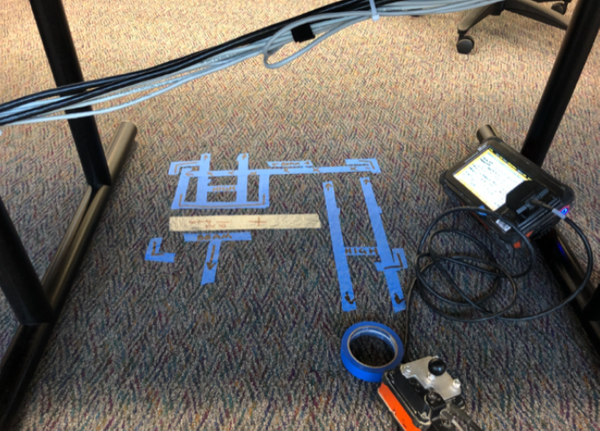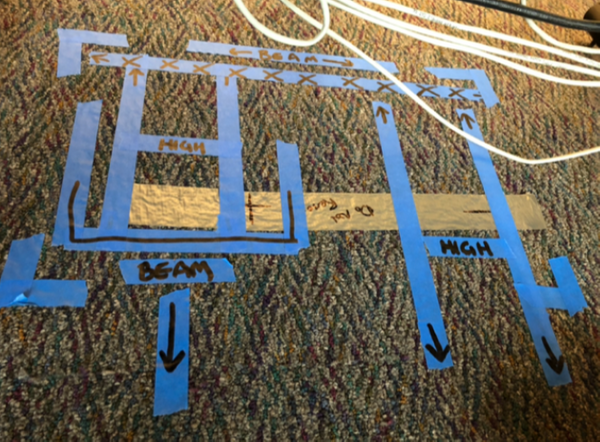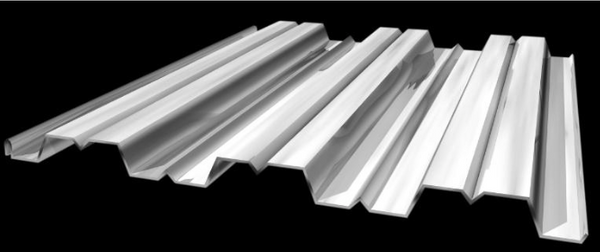
GPRS scans pan decking in high-rise office building
GPRS (Ground Penetrating Radar Systems Inc.) was hired by Midcity Electric to mark out 12 core drilling locations on a pan decking slab, spread over two floors of the AEP high-rise office building in downtown Columbus, Ohio. GPRS marked highs and lows of the metal pan decking, as well as any conduits running through the concrete. We then recommended to the customer to drill through the highs of the pan decking, as we are better able to confirm the absence of conduits in the high portion of the metal sheets. The last picture below shows what pan decking looks like prior to having concrete poured over the top.
GPRS marked all the highs and lows and found several conduits. Furthermore, to the surprise of the customer, we also discovered that many of the locations of pan decking the customer had intended to drill into had beams running below it. Below are two examples of where we found beams running in both directions along the bottom of the concrete slab. Many of the core drilling locations had to be moved to prevent drilling into one of these foundational supporting structures.
The main tools in our arsenal for concrete scanning are the 1600 MHz GPR Antenna, the 2000 MHz GPR Antenna, and the Electromagnetic Pipe Locator. One of the benefits of calling GPRS for any concrete scanning or utility locating job is that we are specially trained in more than one method and utilize several different pieces of equipment to ensure our customers receive the most thorough and all-encompassing methodologies to perform our jobs to the highest standards possible.
The 1600 MHz and 2000 MHz GPR Antennas work by sending pulses of energy into a material and recording the strength and the time required for the return of the reflected signal. Reflections are produced when the energy pulses enter into a material with different electrical properties from the previous material. The strength of the reflection is determined by the contrast in signal speed between the two materials. The total depth achieved can be as much as 18 inches or more with each of these antennas but can vary widely depending on the conductivity of the materials and other factors such as the spacing of the reinforcing. The Electromagnetic Pipe Locator can passively detect the electromagnetic fields from live AC power or radio signals traveling along some conductive utilities. It can also be used in conjunction with a transmitter to connect directly to accessible, metallic pipes, risers, or tracer wires.
- Please contact GPRS for any of your utility locating or concrete scanning needs:
- Daniel O’Shea: 614-202-8553 daniel.oshea@gprsinc.com
- Mitch Streight: 614-400-6889 mitch.streight@gprsinc.com
- Asher Coats: 419-261-4250, asher.coats@gprsinc.com


